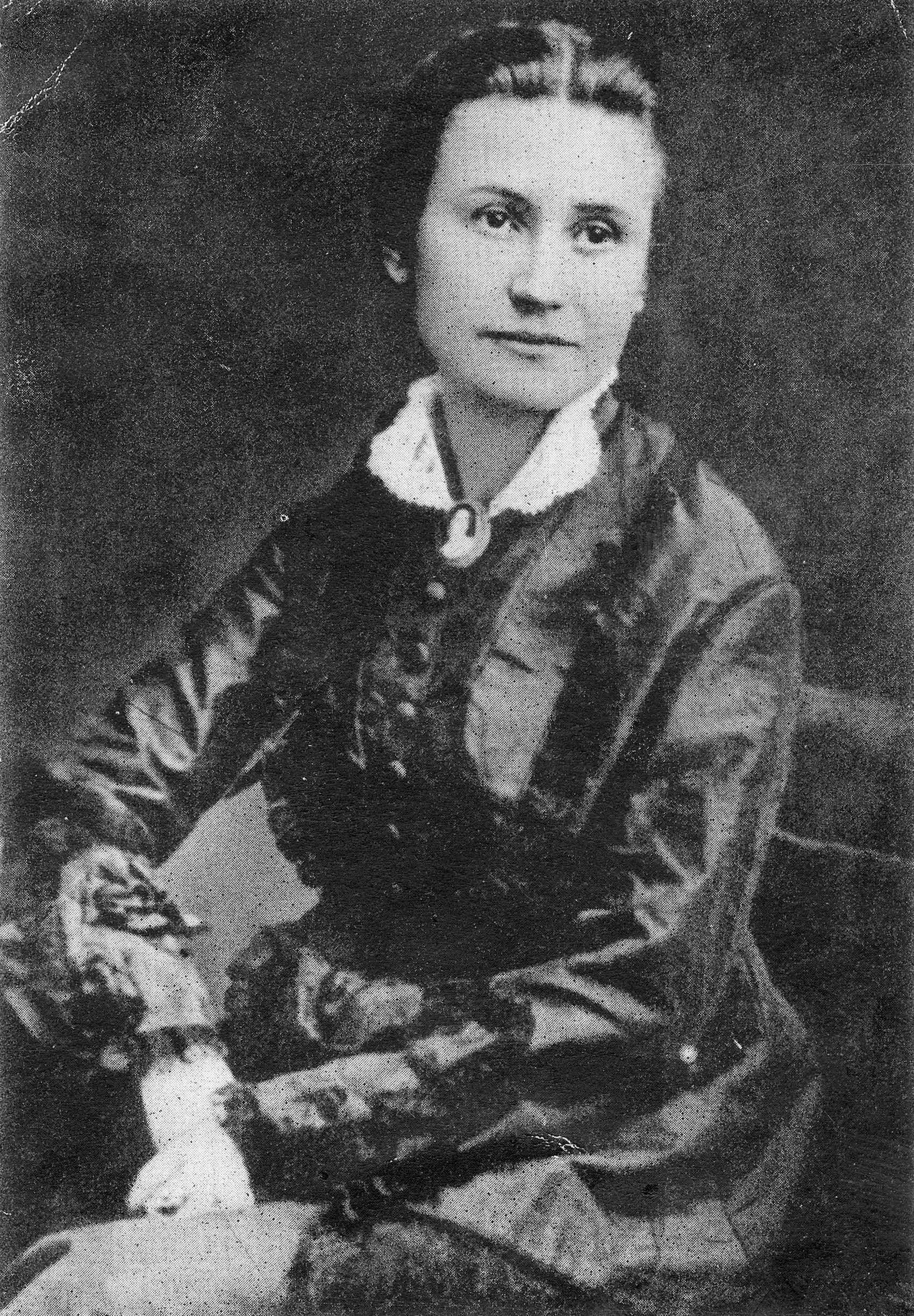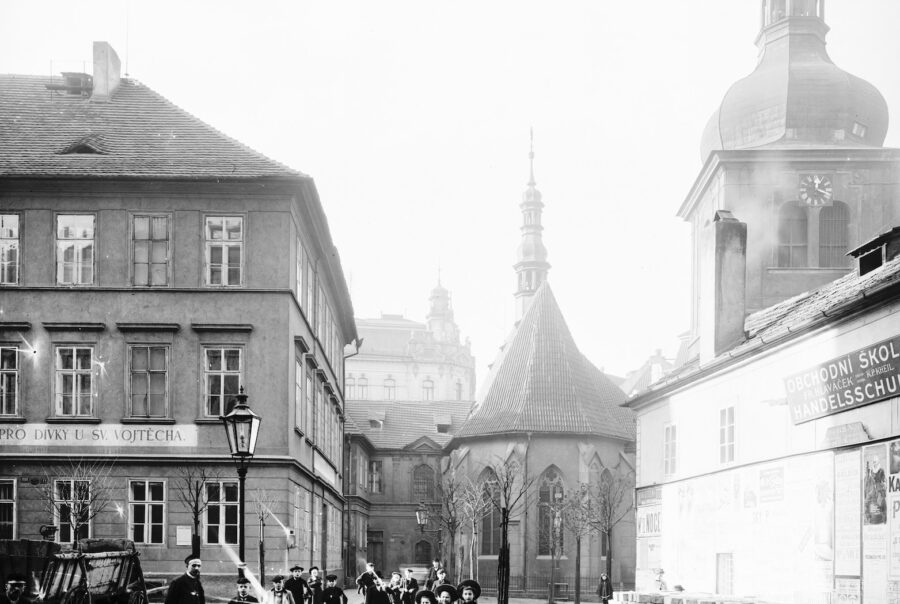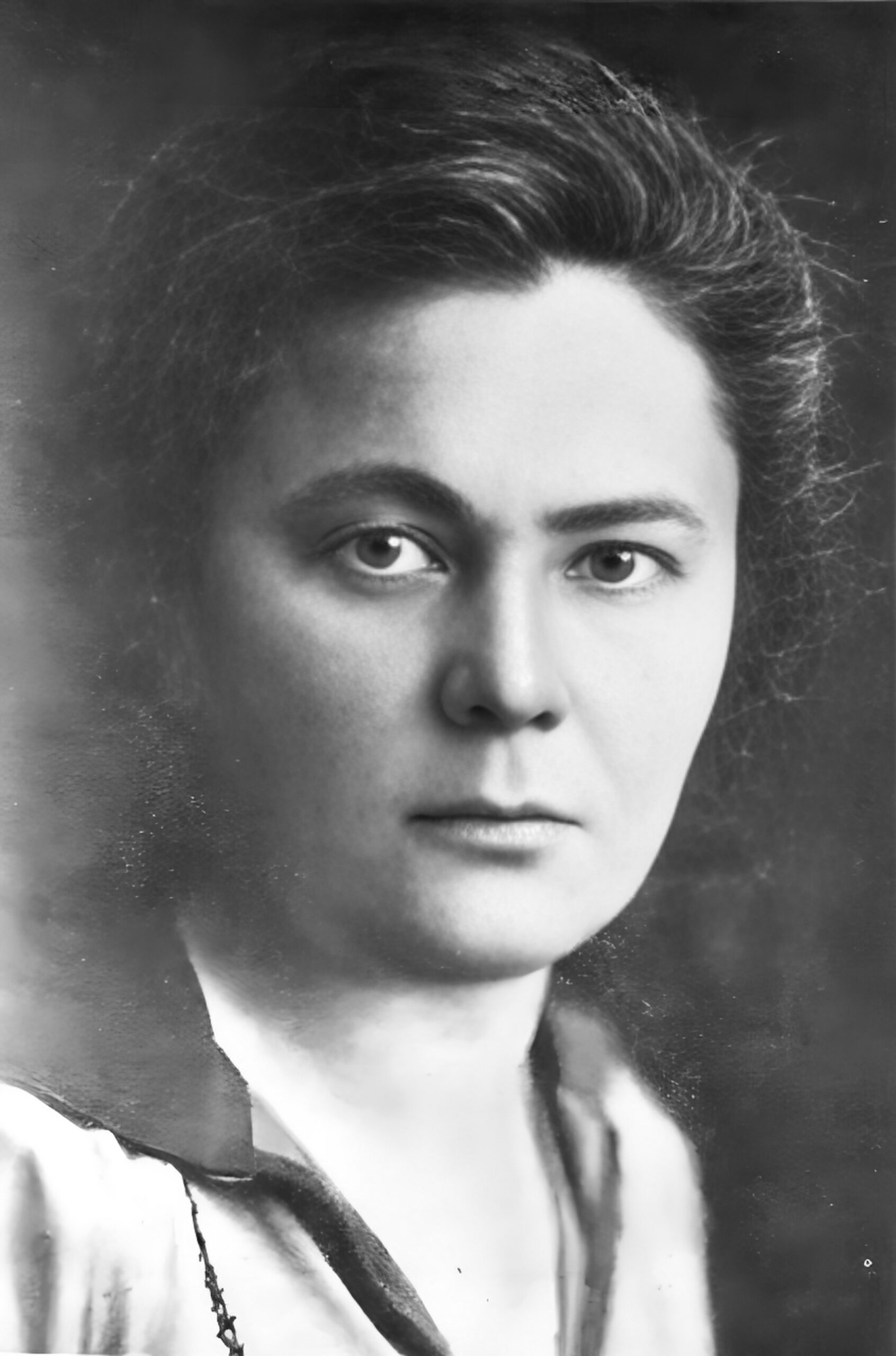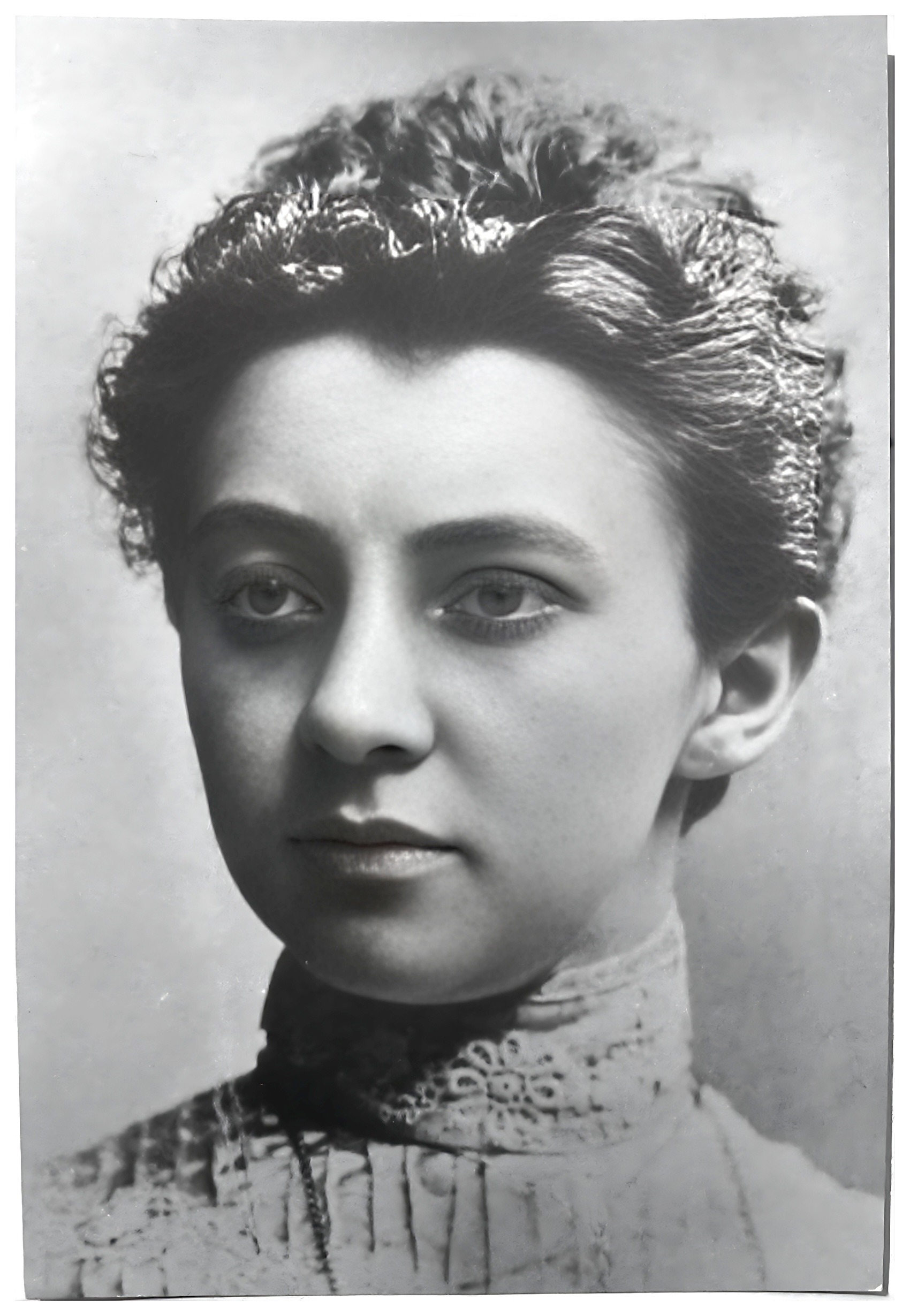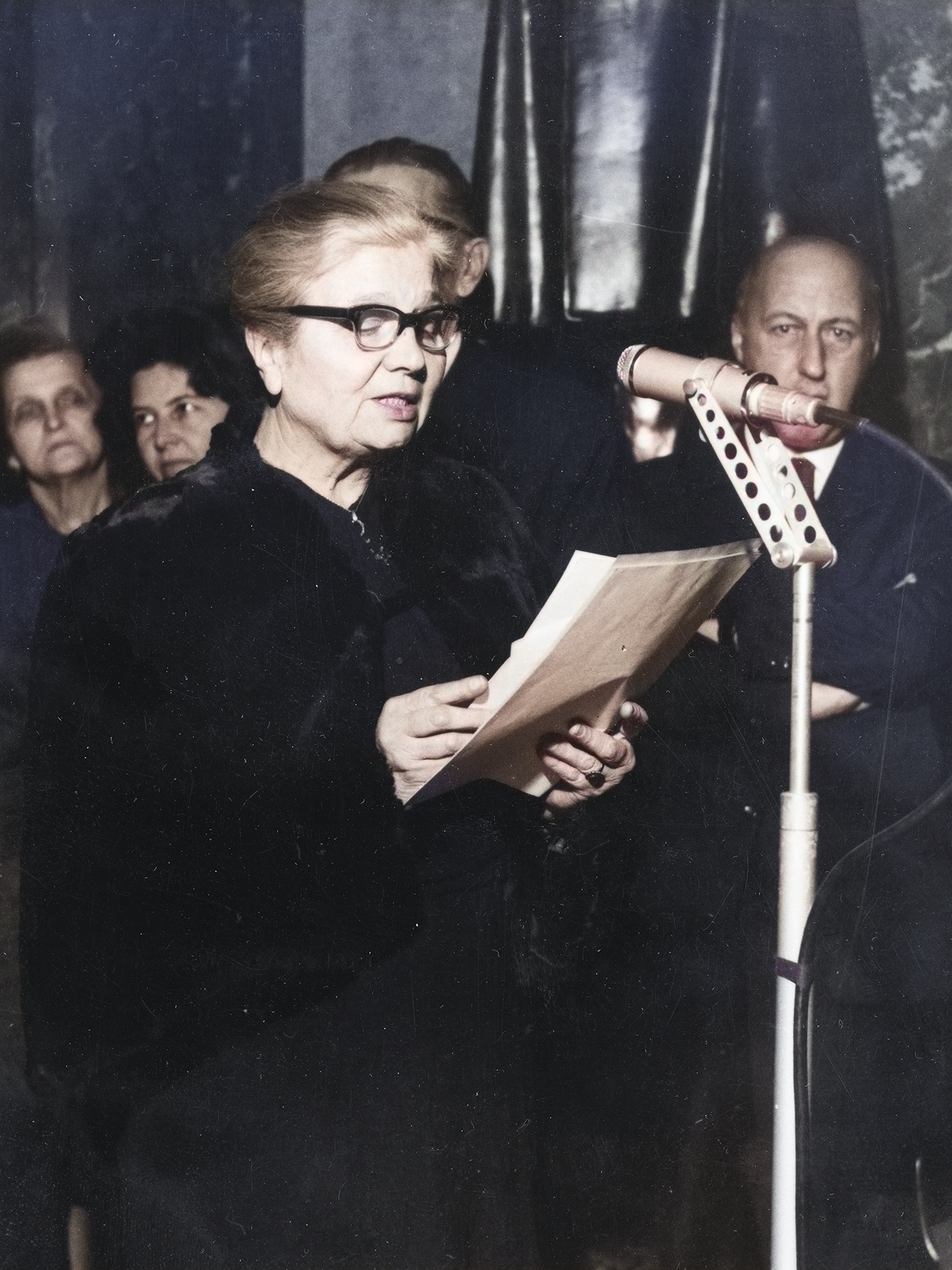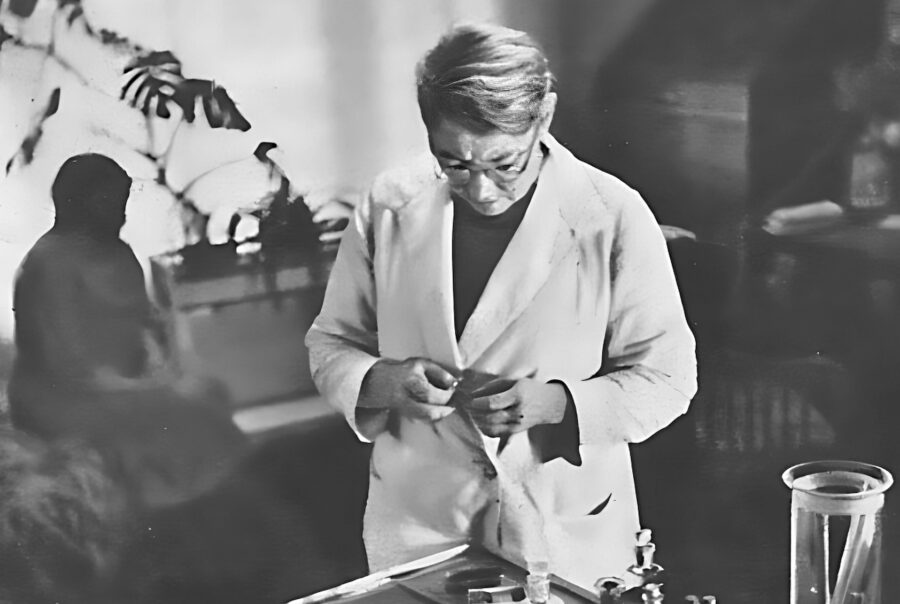Minerva was the first girls’ gymnasium in Central Europe. Its establishment in 1890 marked a watershed moment in the history of Czech women’s education. It was based in a Renaissance Revival building from 1882. In 1906, following intense negotiations by Women’s Educational Association Minerva (Spolek pro ženské studium Minerva) and its founder Eliška Krásnohorská (1847–1926), an extra floor was added to the three-storey building. It had been a big dream of Krásnohorská from her young age to establish a public secondary school for girls providing access to college education. The plan took on real proportions in 1890, when she achieved to collect almost five thousand signatures and petitioned the Imperial Council with the demand to establish a public girls’ gymnasium. As the petition was met with little interest, Krásnohorská published her Appeal to Educated Czechs (Provolání Vzdělanstvu českému) announcing her intention to establish Minerva as a private school. Her application got authorized, and instruction at Minerva became reality in the very same year, albeit first in two rooms only.
For many years, Minerva (as a private school established by an association) was not certified to issue matura certificates, and her alumnae had to obtain their graduation certificates at a Štěpánská Street public boys’ gymnasium. Gymnasium studies (and getting a matura) represented an important step towards women’s access to universities and college degrees. The instruction was initially covered by teachers from boys’ gymnasiums because women were still unable to obtain the credentials required for teaching at a classic gymnasium. However, the classes were shadowed by supervisors – older married women overseeing the morality of both students and teachers.
During her efforts to open the girls’ gymnasium, Eliška Krásnohorská faced strong criticism by important politicians and literary men. For example, Alois Jirásek wrote this comment on his refusal to sign: “…please consider the amounts of Latin and Greek, physics, history, mathematics (not to mention other, relatively easier items) – girls from middle schools should master all that in four or five years! I’m afraid that would entail too much strain and a lot of trouble.“ Yet the number of applicants to Minerva continued to grow. Although matura certificates were initially not issued at Minerva (and even ones from the nearby boy’s gymnasium were not enough to authorize girls to enter colleges), the shift towards access to education for girls became unstoppable. It was not until 1908 that Minerva became authorized to issue matura certificates.
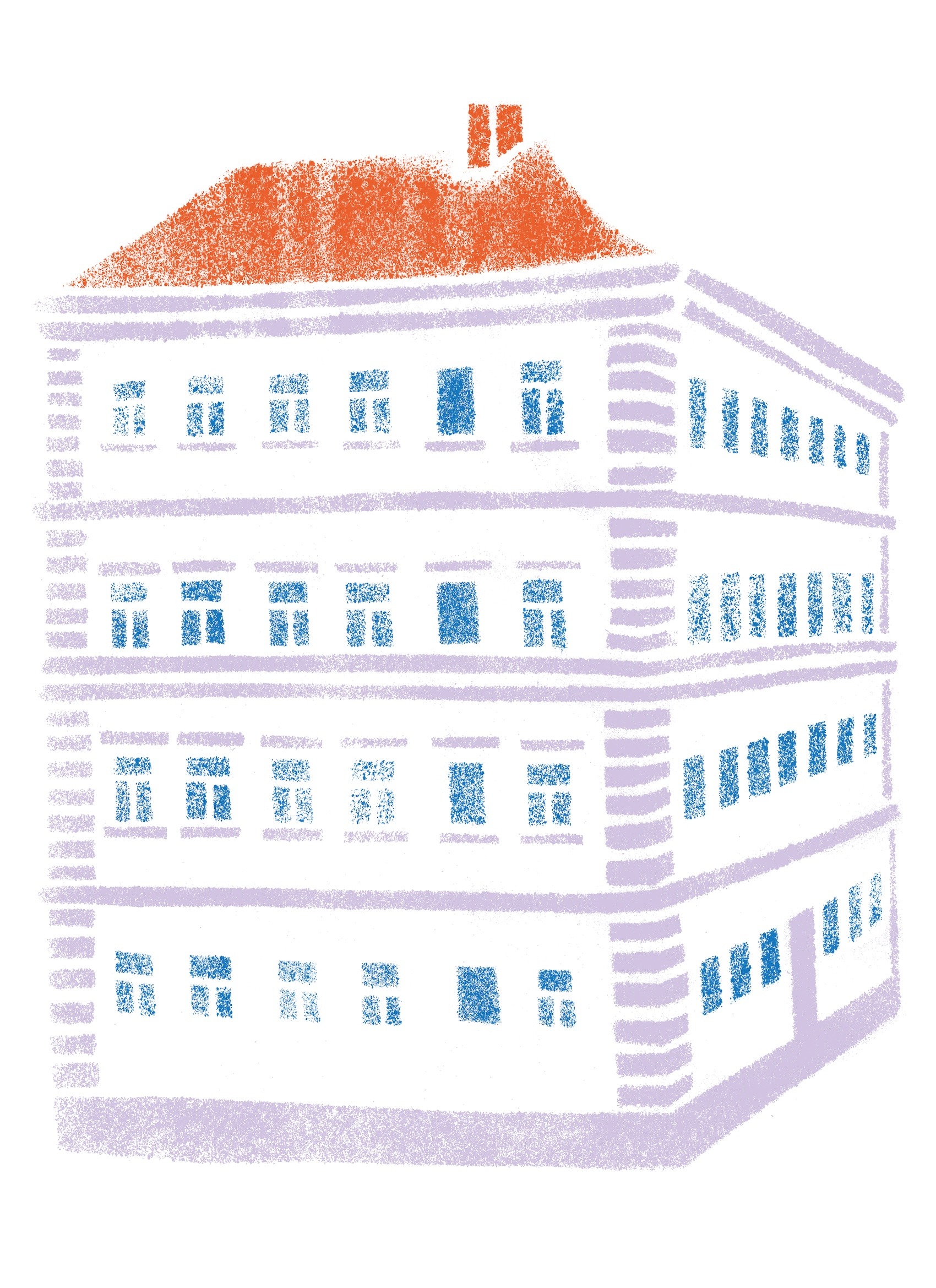
Marie Zdeňka Baborová became the first doctor of philosophy in 1901 and Anna Honzáková the first physician three years later. Many other outstanding women graduated from Minerva as well, including Alice Garrigue Masaryk, the writers Marie Tilschová and Jarmila Loukotková, the journalist Milena Jesenská, or the architect Milada Petříková-Pavlíková. The list of celebrity graduates also contains the geographer and anthropologist Klára Červenková or the mathematician Marie Fabiánová.
The gymnasium relocated several times in the course of its existence. For example, it occupied temporary pavilions in the garden of a villa named America (Ke Karlovu Street) or a Štěpánská Street school building. World War I made a significant impact on the school’s operation as many teachers were called to the front and the students took part in charitable endeavours of the Red Cross. When the building of Minerva got confiscated by the military, provisional instruction was started in a Křemencova Street building. In 1917, at the occasion of the 70th birthday of its founding mother, Eliška Krásnohorská, the school was named in her honour as Krásnohorská Municipal Real Gymnasium for Girls. After the war, as the number of applicants constantly grew, the need for larger premises arose. A plan to build a dedicated building in Lazarská Street was announced in 1922. Important changes were precipitated by the WWII, as many teachers and students were forced to leave the school, a relocation to provisional rental premises in Školská Street and Vodičkova Street took place, and the instruction got significantly reduced. Instruction resumed after the end of the war, but in 1948, the school got relocated to Školská Street to free its Lazarská Street building for the newly established Faculty of Education, Charles University. In 1949, the Eliška Krásnohorská Gymnasium was merged with another institution in Vodičkova Street. Finally, girls’ gymnasiums in Czechoslovakia were completely dismantled under a school system reform in the year 1953. Today, there is a school in Prague’s Ohradní Street that commemorates the tradition of Minerva and Eliška Krásnohorská through its name, Eliška Krásnohorská Gymnasium.

Listen to the whole story of Anna Kovář (Czech only)”What was it like to see the first girls' grammar school with your own eyes and be the right hand of one of the first Minervists?
Albína Honzáková
(1877–1973)
Minerva teacher, writer, feminist
“I wrote like feminists do.” (Albína Honzáková – a memoir, Museum of Czech Literature Literary Archive, Honzáková Albína collection, inv. no. 184, Documents, CV, p. 6)
Albína Honzáková was born in 1877 into a physician’s family in the town of Kopidlno. One of her five siblings, sister Anna, became the first Czech female physician to graduate from Charles University. In 1897, she became one of the first alumnae of the Minerva girls’ gymnasium. She belonged to the cohort that had to get their matura certificates from the nearby boys’ gymnasium. Alice Garrigue Masaryk was among her classmates at Minerva. She later graduated from the Faculty of Arts, Charles–Ferdinand University, where she attended lectures in history, geography, and philosophy. In 1902, she passed her state examinations in general geography and Austrian geography. In 1914, she defended her doctoral thesis and became the historically eighteenth woman to get a doctorate from the Czech Faculty of Arts. For more than three decades, she served at Minerva as a teacher of history, geography, German, and Czech, making a fundamental difference in the lives of two generations of women. For example, Milena Jesenská was one of her students. For her charisma and innovative teaching methods, she won the nickname “Pallas Athena”.
She represents of the main leaders of the Czech women’s movement. In 1922, she and Alice Garrigue Masaryk started the Association of College-Educated Women (Sdružení vysokoškolsky vzdělaných žen), where she served as president for three years. She also joined Františka Plamínková in working for the international women’s movement. In 1925, they both travelled to a congress of the International Council of Women in Washington, D.C., and Los Angeles, where they delivered presentations on the situation of Czech women. In addition, Albína gave lectures in the Czech Women’s Club (Ženský klub český). After retiring, she devoted herself to writing. For example, she published an almanac of Czechoslovak female students 1890–1930 to commemorate forty years of the establishment of women’s studies by Eliška Krásnohorská. In 1935, at the occasion of the 60th birthday of her good friend Františka Plamínková, she published a monograph on her entitled, Kniha života [The Book of Life]. After the death of her sister in 1940, she also started writing her biography; the text was later added to her memoir. Ultimately, in 1947, the memoir of Albína Honzáková was prevented from publication on ideological grounds. The manuscript is preserved at the Museum of Czech Literature Literary Archive (the Albína Honzáková personal collection). Albína spent the last years of her life with her niece, Czech architect Milada Petříková-Pavlíková.
Anna Honzáková
(1875–1940)
first Czech female physician to graduate at Charles University
“I walked the path of life without fear, but also without pink illusions. My studies were a time of difficulty and struggle when I was not only preparing for life but also becoming toughened and hardened. I knew I would have to continue facing powerful, ingrained prejudices, people’s biases and anger, but also the rivalry and hostility of some of my colleagues. But I had confidence in the power of honest work. Like during my studies, my strength was stimulated and boosted by a sense of professional responsibility, debt to the hard work behind women’s access to college education, accountability to future female physicians… Why did I choose gynaecology and obstetrics as my field? Because these were the fields where women expressed the strongest desire for female physicians and where I also saw the greatest potential for moral intervention. (Anna Honzáková in: Zdenka Hochová, Lidové noviny, March 2002)
Anna Honzáková was born in 1875 in Kopidlno and followed in the footsteps of her physician father. She graduated from Minerva Girls’ Gymnasium (and so did her two-years-younger sister Albína). At school, she already knew she wanted to become a physician. Therefore, she got a short haircut, which she kept for all her life. She found it more practical and sanitary in contact with patients. After graduating, she started studying medicine, and in 1902, she became the first female Doctor of Medicine to graduate from the Czech Charles–Ferdinand University (later Charles University) in Prague. Anna Honzáková was historically the first licensed physician with a private practice and the third licensed physician in Bohemia. The two female graduates before her were Bohuslava Kecková and Anna Bayerová, who obtained their MUDr. degrees at Swiss universities.
Anna Honzáková did her residency at the surgical department (and later the gynaecological department) of the General University Hospital in Prague. Finally, in 1905, she opened her private gynaecological surgery at Na Moráni Street, Praha. This was a breakthrough achievement at the time. Thanks to her skills and kind attitude, she became a highly popular and in-demand physician. Her surgery was frequented by National Theatre celebrities and even the wives and daughters of physicians who had previously opposed women’s access to medical education. She provided free care to impoverished women. She raised public awareness of responsible parenthood, obstetrics, and birth control, but in contrast to her more leftist colleagues, she was strongly opposed to interruptions. Unlike her sister Albína, she never got married; she helped her sister’ family all her life. She also took care of her brother’s out-of-wedlock children and the premature twin babies of her housekeeper.
She was active in the Czech Women’s Club and in the Women’s Suffrage Committee (Výbor pro volební právo žen). In 1930, she founded the Association of Czechoslovak Female Physicians. For many years, she served as Minerva’s in-house physician and taught hygiene at the girls’ department of a secondary school in Praha 2. In 1937, she established an endowment for impoverished, abandoned and ill women, donating a part of her savings to it. In addition, she contributed articles to the Women’s Letters and Ženský svět [Women’s World]. She wrote a monograph on preventing tuberculosis in children (1903) and a biography of the first Czech female physician, Anna Bayerová (published by the Women’s National Council, 1937). She spent most of her leisure time with her sister Albína in the suburban town of Dobřichovice, where they had built a villa in the 1920s based on a design by their niece and the fist Czech female architect, Milada Petříková-Pavlíková. As a gardening enthusiast, Anna fell in love with the villa’s large garden. She died in the year 1940. Her biography inspired Eliška Krásnohorská’s theatre play for children, Hojička z lesa [The Healer from the Woods].
Vlasta Rostočilová
(1902–1974)
Eliška Krásnohorská’s final caregiver, mathematics teacher at Minerva, last executive director of the Women’s Czech Production Society
“If feminism is no longer a struggle against slavery, alcohol, and prostitution, it remains a struggle for democracy and for liberating ethics from the hegemony of the economy and nowadays, if you will, also politics.” (Vlasta Rostočilová, handwritten notes from Emanuel Rádl’s lecture on the women’s movement, Eliška Krásnohorská Archive, Gender Studies, o.p.s.)
She was born in the village of Kralovice near Pilsen. For many years, she taught mathematics at Minerva Girls’ Gymnasium. She served as a secretary of the Krásnohorská Association and the last executive chair of the Women’s Czech Production Society. She wrote literature, including poems and monographs, and gave lectures. In 1973, she authored a memoir about Czech physician Eliška Vozábová, one of the first Minerva alumnae and doctors of medicine, who was nicknamed “the oldest Czech female physician” because she remained active in her practice till the age of 84 and died at nearly 100.
Vlasta Rostočilová was very close to Eliška Krásnohorská. She served as her last caregiver, looking after her till her death in the year 1926. Subsequently, she worked with her heritage and estate. She herself died in 1974 in Prague. Thanks to Vlasta Rostočilová and her relative, archaeology professor Jan Bouzek, the estate of Eliška Krásnohorská was transferred to Gender Studies, o.p.s.


